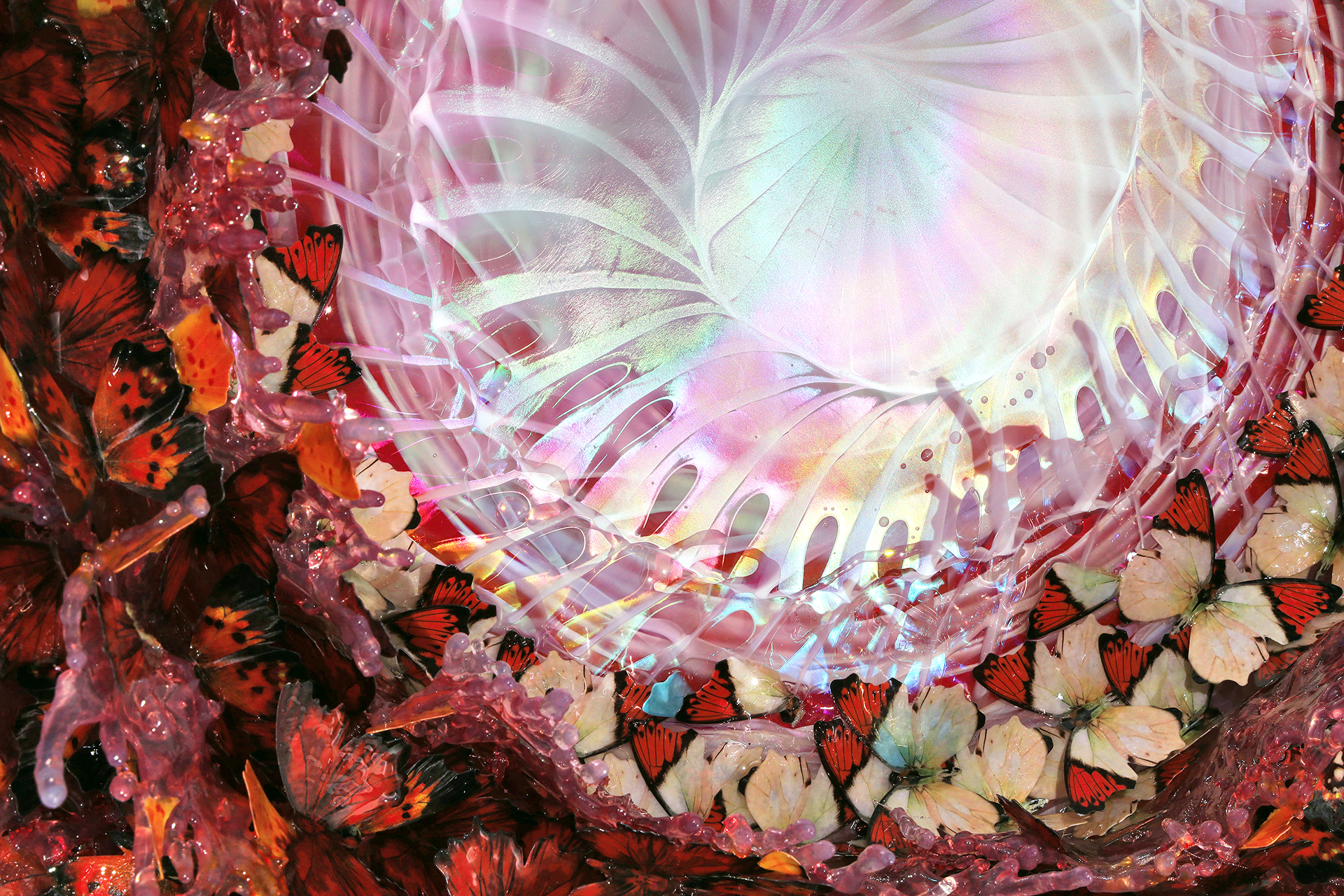BY ANGELO CRESPI (2022)Alchemica
The furious beauty of Annalù’s discs
First of all there’s the question of the circle, or rather the disc which is the form with which Annalù often expresses herself.
A question still little analysed in previous critiques and which is worth expressing, at least regarding her outlines, since it is unusual for an artist to prefer a disc to a square, so much so that in Italian by definition we call canvases of different shapes “quadri” (“quadro” is also the word for square), maintaining the archetype of the painted-picture-window.
The disc on the other hand refers to something else, to church rosettes, for example, that have a function which is more ornamental than illuminating, to the wheels of millstones and mills, to the great cogs of twentieth century industry, or to the more fragile ones of watches.
Circumference, it goes without saying, has a magical worth: symbol of perfection, of cylindrical time, of rebirth, emblem of the universe and of the world, of the infinity that we predict, but that we can best grasp only through its geometric representation, that is the circle. For sure there are illustrious examples of works throughout art history that are explicated in circular form, from Michelangelo’s famous Tondo Doni to Caravaggio’s Medusa’s head, and the recent Mandalas by Damien Hirst, which at first sight have no small affinity with Annalù’s works, especially with regard to the butterflies that compose them, in the first real ones impaled, in the second reconstructed in resin. However they are isolated cases in art history, micro variations within almost unlimited painting theories, as if the square were a reassuring form to show and the circle, on the other hand, a useful deviance to allude.
Following this reasoning, the first allusion is of an aesthetic phenomenological type and is valid for Annalù’s Dreamcatcher which are, in my opinion, among her most powerful works, precisely for their immediate mediation of a furious beauty. The disc, in Murano glass and resin, plus other composite and natural materials, seems to be the result of an explosion which however disperses without ever deflagrating, the embedded centrifugal force finds a balance in the centripetal force, so that one’s glance is compelled to the outer and, falling back, the inner, in a continuous struggle between concentration and dissipation, an ocular motion intensified by the whirling progress of the elements which hold it in fragile equilibrium, butterflies and leaves, first in an intense colour, towards the centre, and then always more rarefied at the edges. Recent studies in neuroaesthetics explain that abstract art – as we could define that of Annalù, beyond her recurrent use of butterflies and leaves – activates, even without the use of figures, so called “embodied mechanisms” able to stimulate actions, emotions and bodily sensations in the viewer, provoking a sense of involvement which is not only mental but corporeal, induced by the movements implied by the physical traces or intensity of the colours present in the works that they are observing. So we are almost constrained to turn our eyes and even our body approaching and moving away from these hypnotic explosions-implosions, impossible to grasp unitedly except in movement, that is, with a kinetic effort of our whole being.
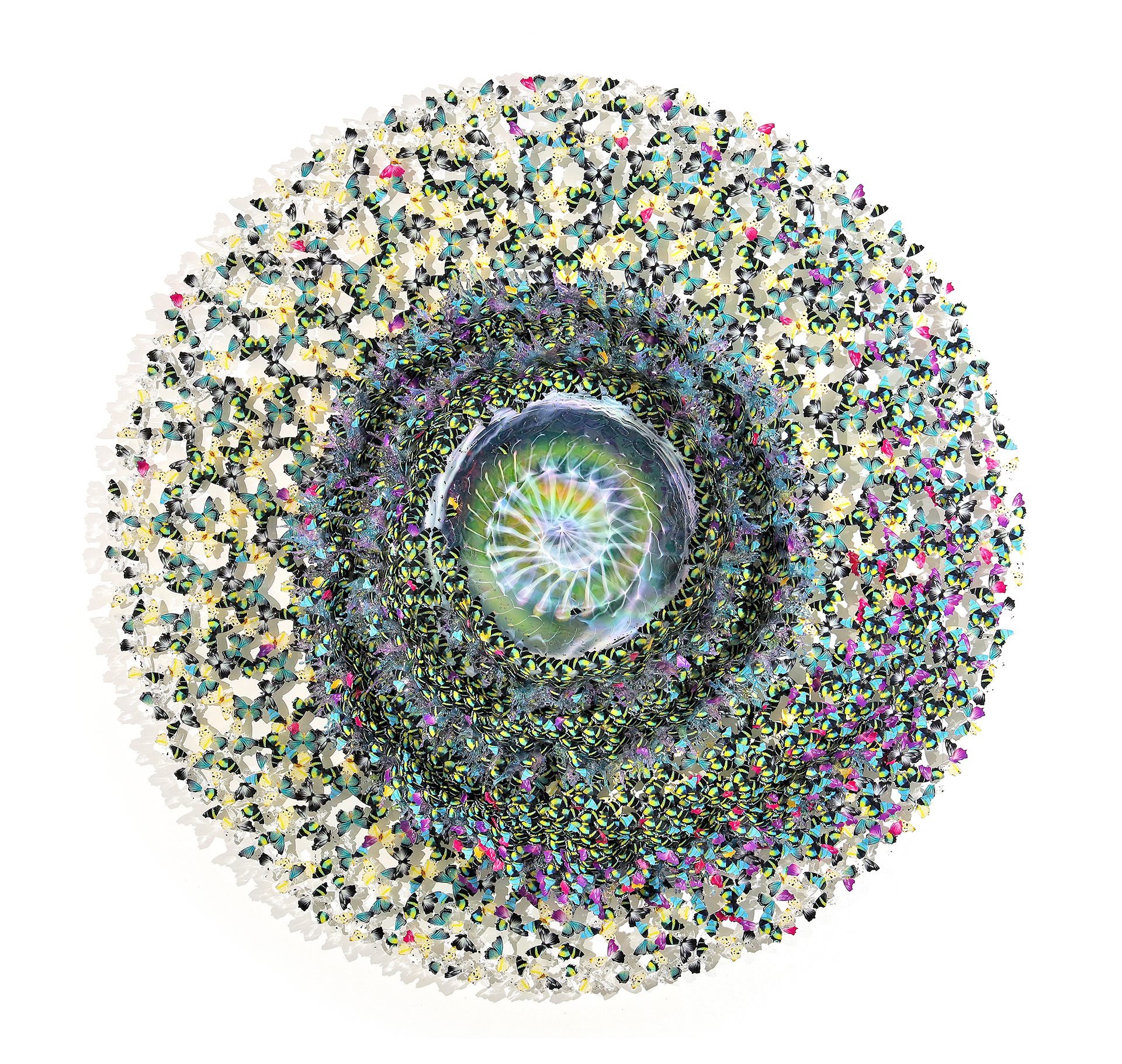
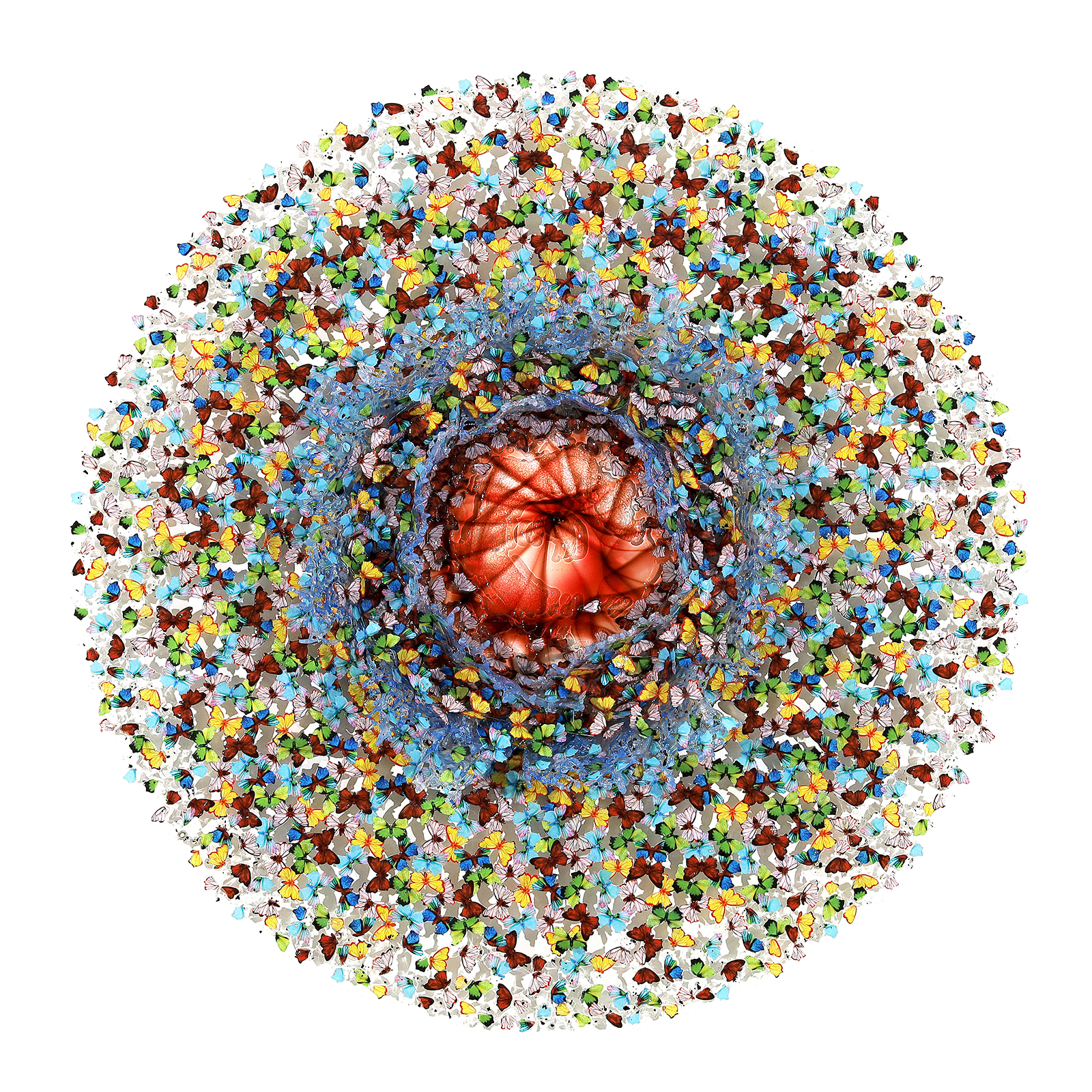
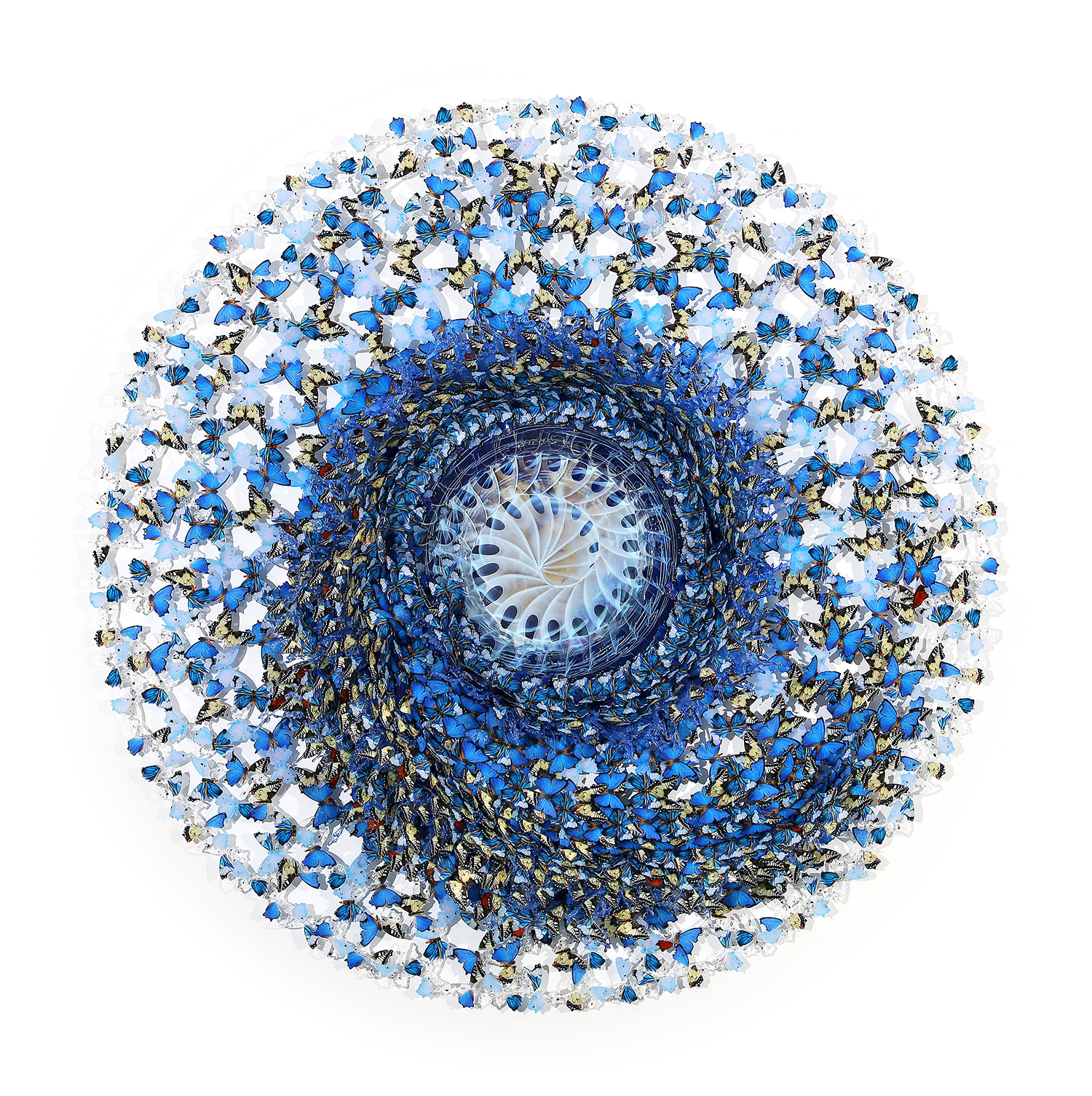
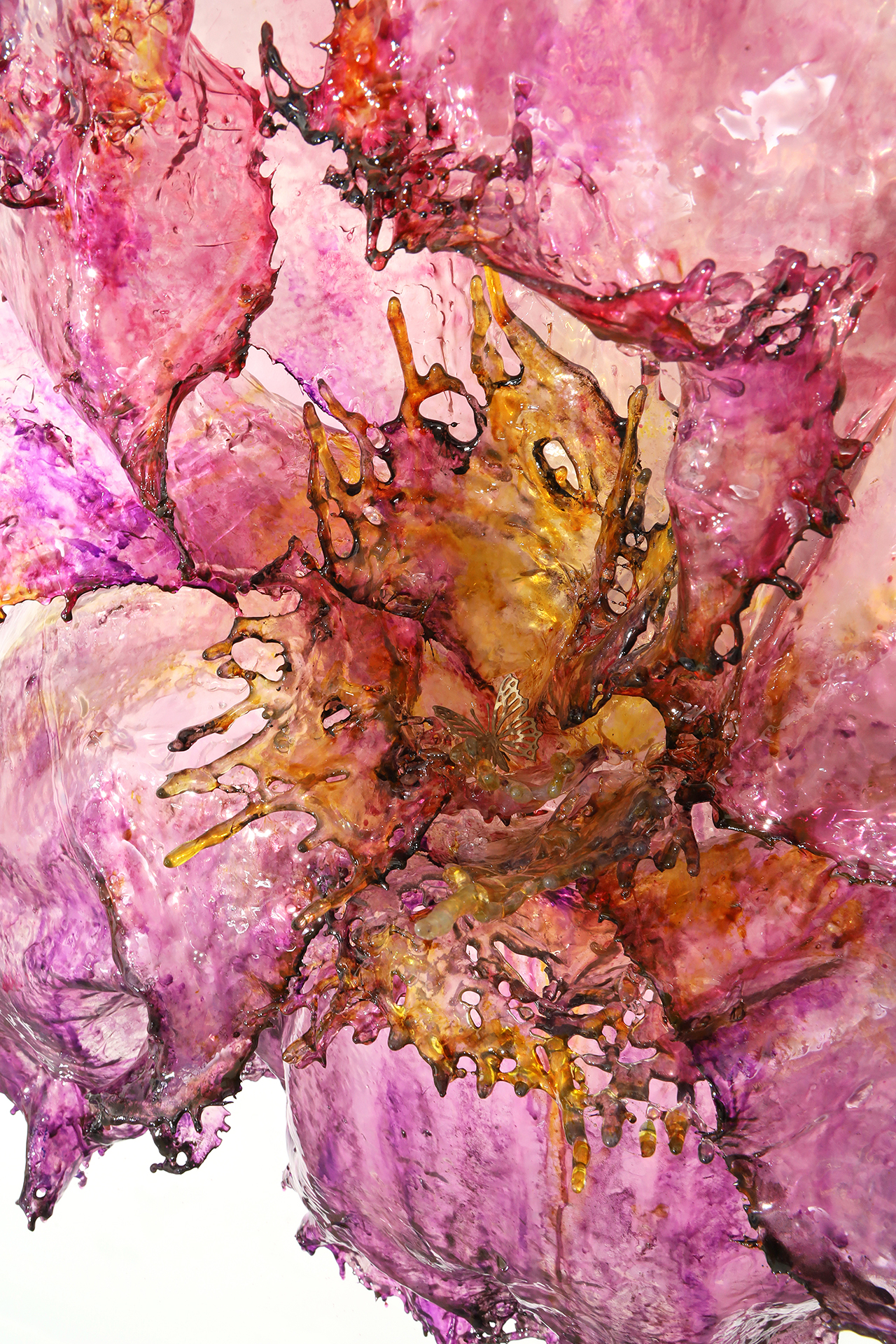
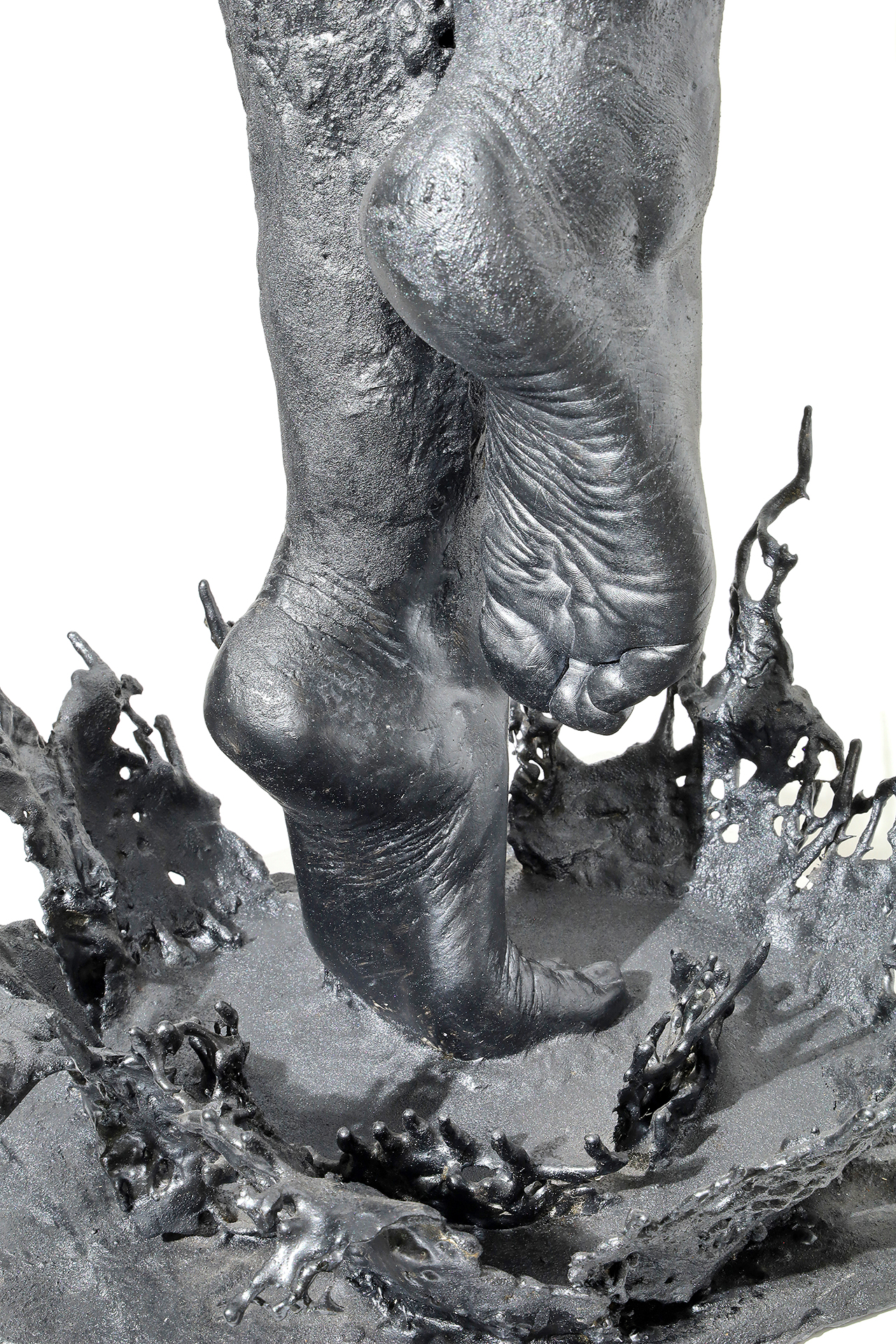
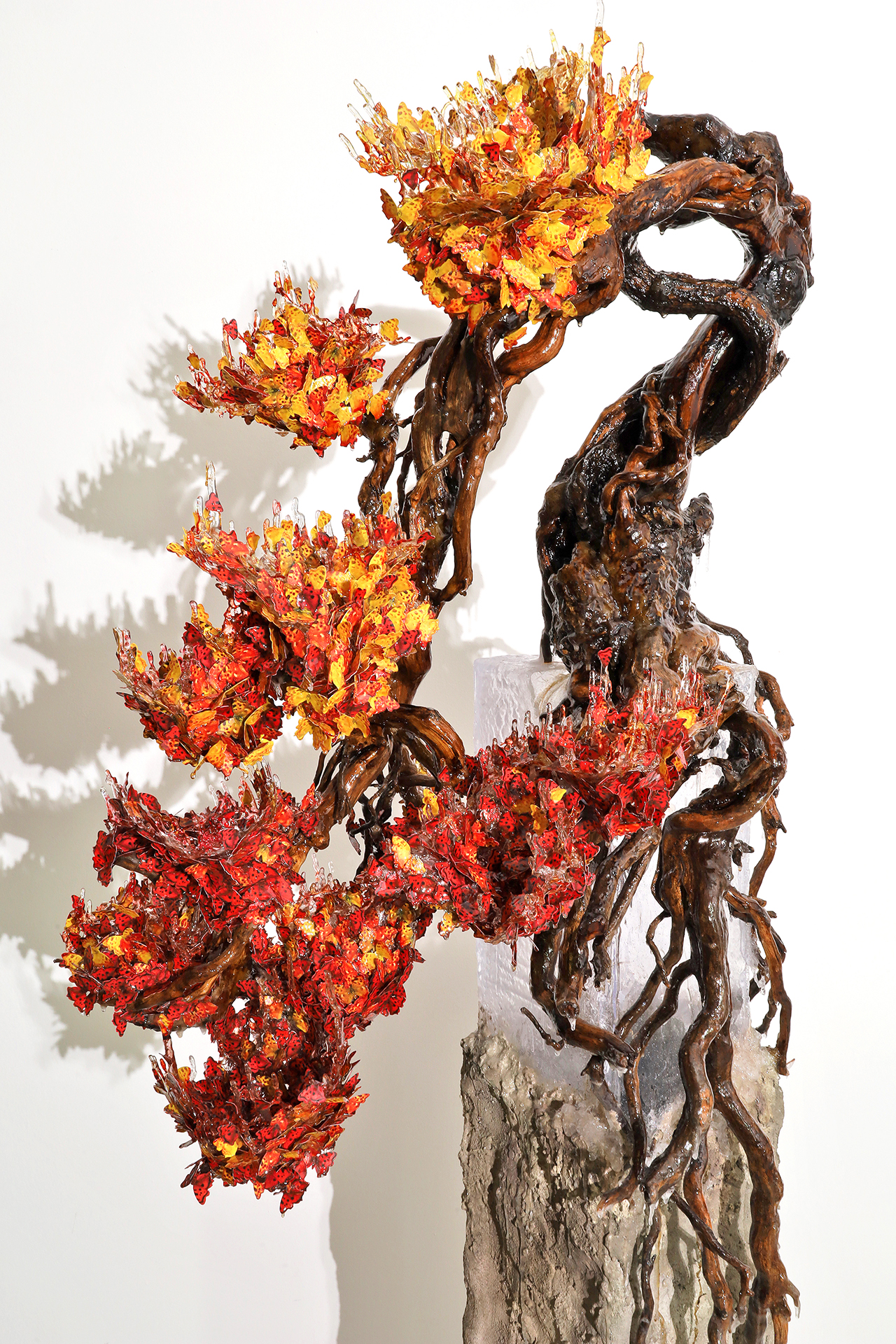
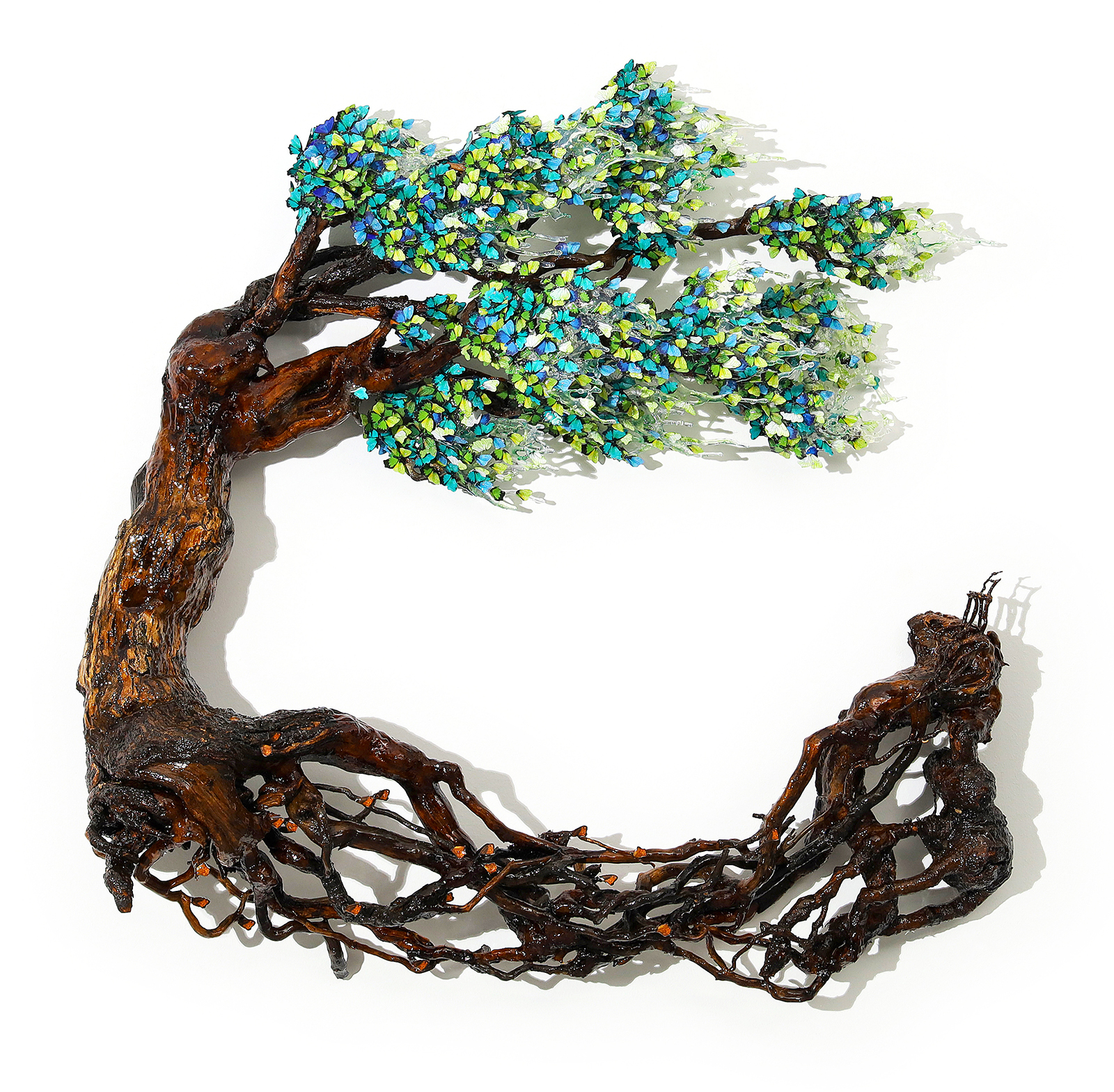
The second allusion is of a philosophical theological gnoseological type, being that the circle, also in Annalù’s works (if one thinks of the Light disc), reveals further meanings with respect to the mere formal question and allows us a super-sensitive and non-analytical understanding, that is not caused by mere measurable experience, and if anything derived from pure intellect or inherent in the sphere of transcendence. The circumference represents the infinite, interpreted as cyclic repetition of time and the disc obviously refers to archetypal forms such as the mandala which primordially represents a space oriented around a sacrificial centre. In all ancient cultures this idea of sacredness remains, technically a place made such through a sacrifice that is carried out within its boundaries: for example, in the sacrificial Aztec stones, enormous round monoliths of carved stone used as altars, on which the sacrificed were quartered in order to extract the heart and offer it, palpitating, to the god; and it is this fluttering of butterfly wings in Annalù’s Dreamcatcher that echoes memory, life and death, humanity and divinity, and in the inconsistency of the colours it exalts the finitude of these tiny animals.
The centre of the circumference of Dreamcatcher also has a further meaning, of omphalos, René Guénon would say, the centre of the world, the epicentre from which everything emanates, a place of prophecy on which to erect the temple, as at Delphi where the oracle predicted fortune and misfortune seated on a conical shaped rock which represented the perfect centre of the earth’s core. Annalù’s mandalas therefore refer to something profound and archetypal: the sculpture’s focal point – made with a disc of murano glass, the production of which involves a centripetal rotation that gives the coloured murrinas a golden spiral layout – is not dispersive but rather, paradoxically, has the attractive force of an aleph within which, Borges says, the vision of God is concentrated in a precise space, that is, the vision of all things, from all angles, in all possible times. And the attraction, paradoxically, is also a negation, a sort of black hole, the exact point where things vanish, and that other artists have investigated with equal sentiment (one thinks of Anish Kapoor, of his installations like Descent into limbo in which the absolute black patented by him serves to deceive the eye, compelling the gaze to precipitate into the indefinite, to become null).
As far as the rest of Annalù’s output is concerned, Alessandra Redaelli has already effectively outlined its modes and results when she underlined the “unbearable lightness”, the transparency, the material that seems to breath, the sublime yet concrete liquidity: characteristics that permit the artist to give a lyrical and dreamlike character to her works, the trees of the bonsai series “shaken by the wind” and “weeping” (Fukingashi and Kengai), Liquid flowers, or even Light disc and Water books. The common element is that of the fibreglass resinglass, Annalù’s preferred material, able to recall water, biographical element from which the artist draws constant inspiration, stopping, however, its inherent fleetingness, and this is where the game is played out between time and eternity, being and becoming, chaos and organic beauty, nature and artificiality. A sort of antiphrastic desire to keep opposites together seems to be the end of an operation, only in aesthetic appearance, in reality of great metaphysical intensity.
Lastly, derived from the willingness to experiment that has marked Annalù’s career, some works have become NFTs, but they are not simple video repurposing of the sculptures, but a conceptual expansion of them, as the digital transposition allows for a further dream narrative.
